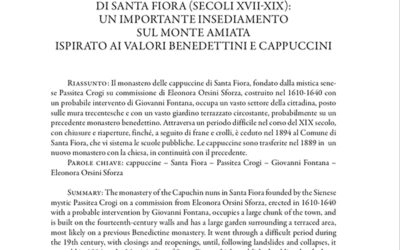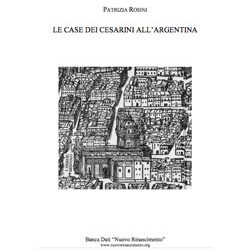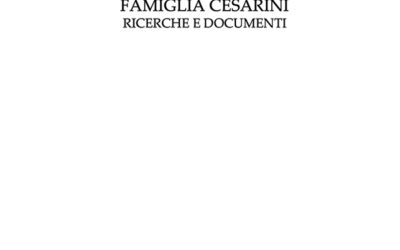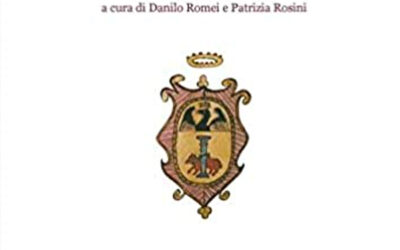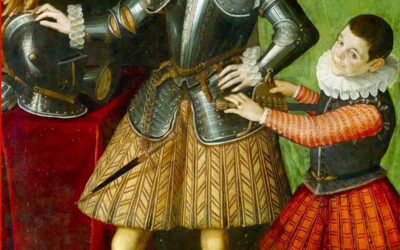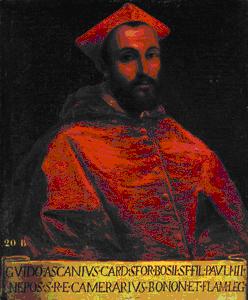
Cardinal Alessandro Farnese (1520-1589), son of Pier Luigi Farnese and Girolama Orsini di Pitigliano, and grandson of Pope Paolo III (1468-1549), found himself overwhelmed with political and family responsibilities upon the death of the latter. He and his brother Ottavio, Duke of Parma and Piacenza, had to struggle considerably in order to maintain the Farnese power compact and secure within the European political scenario of the time. In effect, the popes that succeeded Paolo III did not protect the Farnese family but actually did everything they could to neutralize their political ascent as, on the other hand, Pope Farnese had wisely and intuitively anticipated when he decided to send a letter to his grandson Alessandro, his true and sole spiritual heir, full of suggestions and warnings that he should take into serious consideration the moment his protecting grandfather were to consign his soul to the Lord.
Cardinal Alessandro had, however, a great advantage, he was extremely acute, intelligent, cultured, refined, rich, and charming, not to mention his strong will power to achieve each goal he proposed himself. He had inherited from his grandfather all the intellectual qualities to move the political threads and to dazzle with his indisputable and vast culture all the courts of Europe. Even the most controversial queen of the century, Caterina de’ Medici, had for all her life a very strong bond of friendship with the Cardinal to the point that she allowed him to hold in usufruct the vineyard next to Palazzo di Sant’Eustachio in Rome (today Palazzo Madama) which had been reinstated to the de’ Medici family after a long and laborious legal suit with Margherita of Austria, widow of Alessandro de’ Medici and subsequently wife of Ottavio Farnese.
Based on the above, it is easy to understand which were the real motivations that induced, specially, Pope Paolo IV (Giovan Pietro Carafa), of Neopolitan origins, 1476-1559) to neutralize the Farnese power using, like his predecessor Giulio III, the contended duchies of Parma and Piacenza which at all costs were aimed to be reinstated as possessions of the Holy See, causing not few concerns to our Cardinal.
In order to fully understand who was Paolo IV was, it is must be remembered that in 1536 he was nominated cardinal by Paolo III and became pope on May 23 1555 with the support of Cardinal Alesssandro Farnese Jr., who, immediately after the election, wrote to the King of France: “[…] it was convenient for us to give this subject, of which we are certain Your Majesty [King of France] will be happy; since for his good qualities and in each respect we can expect to be a universal Pontificate and propitious to the effects of your Crown; being among the first nominated by Your Majesty and appointed by us his servants under his express order […]”; whilst to his agent, Knight Tiburzio, he said: “ […] for this I resolved that there was no time to loose and consulting the Reverend of Ferrara, we agreed to the exaltation of Naples, as a Subject that only in that case appeared to me as someone who could put himself opposite of the Imperials, for his qualities and the respects, of which you know, to the effects of His Majesty [King of France]. […] for now I think His Majesty can be content of the present election, which I hope will have to serve God and at his particular comfort of his effects […].” Paolo IV was a great defender of the Christian Orthodox religion, he had the flaw of establishing the Hebrew ghetto in Rome and he began to foment the perennial contend between Enrico II of France and the Emperor Carlo V. His aversion for Spain and the Emperor caused a dangerous division among the Roman nobles sided with one and the other side; among them, also the Sforza di Santa Fiora, cousins of Cardinal Alessandro, and friends close to him were involved.
It was August 6, 1555 when an episode shook the already precarious political equilibrium between Paolo IV and Carlo V. Two of the three galleys owned by Carlo Sforza and commanded by Niccolò Alamanni, on behalf of the King of France, Enrico II di Valois (1519-1559), were seized by Alessandro Sforzo of Santa Fiora, Mario, his brother, and other followers, and conducted to Gaeta and then Naples, under the Imperial power. They deceived Giovanni Count of Montorio, fraternal nephew of Pope Paolo IV Cafara (1476-1559) through Gianfrancesco Lattino, secretary of Cardinal Guido Ascanio Sforza of Santa Fiora and treasurer of the Papal Court (1518-1564), who had the order allowing the galleys to depart drafted. Consequently, Paolo IV ordered the imprisonment in Cast Sant’Angelo of Gianfrancesco Lattino, inciting the rage already meandering among the supporters of Spanish which included Cardinal Guido Ascanio Sforza, brother of Alessandro the captor of the galleys. They were sons of Costanza Farnese and Bosio Sforza Count of Santa Fiora and grandchildren of Pope Paolo III (1468-1549) who during his entire pontificate tried to find a definite agreement between France and Carlo V.
The Sforza and Farnese cousins were almost always divided in the political decisions and never reached an agreement other than a mere semblance of family collaboration, aimed primarily to conceal their disagreement from the public imagine. A Galley drawn from the site http://www.sullacrestadellonda.it/imbarcazioni/gimbarcindex.htm#galea1
Cardinal Guido Ascanio was a fierce enemy of the Carafa family and he demonstrated it when he decided to unite in his Roman palace, called the Vecchia Cancelleria (donated to him by his grandfather Paolo III Farnese and today known with the name of Palazzo Sforza Cesarini), a congregation of Imperial supporters, among whom Marcoantonio Colonna and the Roman gonfalonier Giuliano Cesarini, enraging the Pope. Cardinal Alessandro Farnese Jr. found himself in an unpleasant situation: on one hand he had to softly intercede for his cousin, while on the other he continued to support France; in fact, on August 14 1555 he wrote the following to Enrico II: “[…] and in addition to the one-hundred scudi, that the ambassador had offered me, I showed myself ready, as I will in fact be, to engage all my income and expose my brothers, the states and my friends for the Apostolic sear and for you […]”.
Cardinal Guido Ascanio Sforza of Santa Fiora (on the left) and his brother Cardinal Alessandro Sforza of Santa Fiora painted by Siciolante from Sermoneta in the Sforza Chapel in the Basilica of Santa Maria Maggiore in Rome.
Among the noteworthy persons of the time that upset the Pope during this struggle between the French and the Imperials, we find Marcoantonio Colonna, well known by Cardinal Alessandro, who wrote the following to Knight Tiburzio, his agent before the court of France, on August 28 1555: “[…] and because in these days Sir Marc’Antonio Colonna let himself slip a few inconvenient words saying that many could be born in Rome and that the grand children of the Pope should be tied in Naples, he did not fail to show to the Pope that the forces of Sir Marc’Antonio are of little importance in this City and that His Holiness has servants that have more than him[…]”. In the following days, when the terms granted by Cardinal Sforza for the restitution of the galleys had passed, the Pope had him closed up in Castel Sant’Angelo together with Camillo Colonna, the other personality who had spoken with great disdain of the Pope in the reunion that took place in the palace of the treasurer of the Papal Court.
Cardinal Farnese commented the episode to his cousin on August 30 1555 as follows: […] finally, yesterday he decided and ordered (the Pope) that the Cardinal o Santa Fiora be closed up in Castel Sant’Angelo and after him Sir Cammillo Colonna, since he did not appear […]”. It does not seem that Farnese was particularly upset about the event, on the other hand his cousin found himself supporting the sympathies of the Imperials while he was on the opposite side. In any case, he had to try to balance his interests with those of the family, hence the letter he wrote to the Count of Santa Fiora on August 31 1555 regarding the imprisonment of his cousin. “ If the case followed by your Illustrious and Reverent has given me pleasure, I leave to the consideration of those that have the judgment to think of the reasons for which I have to be distressed; and even if Your Illustrious Lordship did not appear to confide nor confer your troubles, nor to refer them to me by someone else, for this, I do not wish to fail before your needs so that the world can know that from my part nothing that is convenient for me to do for you and your House was left undone. It remains that my good intention be accepted: that I, for my part, are ready to show the effects. For now, I have nothing else to remind your Lordship, other than, not being here who can procure for you, you start thinking if it were not good for you to come in person to Rome to negotiate your liberation and when you think to be able to ensure it, wishing that I procure this or the other, or that I do anything else, I offer myself for what I am worth and for whatever your Lordship will consider offer. Hence I rely on your prudence and courage, regretting this incident, I implore you with all my heart.”
Pope Paolo IV Carafa drawn from the site www.araldicavaticana.com/paolo_iv.htm
The winners of Lepanto:Don Juan de Austria, Marco Antonio Colonna and Sebastiano Veniero. Image taken from the site: es.geocities.com/capitancontreras/lepanto.htm
Cardinal Alessandro decided to write to his friend Savelli, maybe solicited by the brother of the latter, who in those days evidently thought to give his moral support by visiting the sons of the prisoner Camillo Colonna: “ I heard your Lord intends to visit the sons of Lord Cammillo Colonna and offer your help, whatever it may be. I cannot believe you will because I do not think you are so imprudent, nor wish to upset Our Lord and fall in his disgrace, risking to ruin yourself and your house and to compromise the service your brother Lord Cristofano has taken at the Holy See. If you do not know what it means to be in the disgrace of a Pope, take example from me, who, with all my innocence, was at risk of extreme ruin notwithstanding the import supports I had […].” They were not, hence, fruitful moments for Cardinal Farnese; he was in an embarrassing situation but most of all, he had to bear not few scams from the grandchildren of the Pope trying, as bests he could, to avoid a direct confrontation which was a constant threat. On September 4 1555 he therefore wrote to his agent in France, Lord Tiburzio, asking him to solicit Enrico II to form a league with the Pope against Carlo V and reminding that: “[…] even if apparently I cannot withdraw from rendering service to the treasurer and showing interest in these things […]”; he then underlined to him on the following September 7:” […] I may be criticized of over reacting in favor of the Treasurer, but remember that it is done superficially to satisfy the appearance, friends and family. On the other hand, it is fair that he have what he is looking for”.
Finally, on September 19 the Sacred College freed Cardinal Guido Ascanio Sforza with a bail for three hundred thousand scudi, the prohibition to leave Rome without authorization. This occurred when Count Sforza, head of the family, seeing that the galleys were not returned and that his lands near Castro and Pitigliano were in danger, went to visit the Duke of Alba and obtained that they be liberated and conducted by their Captain Niccolò Alamanni. We learn this from the letter addressed to the agent of the Cardinal in France, Lord Tiburzio:” After the last I have written to you, things remain unchanged and actually, one could say that they have slightly softened in view that the Imperials have made the Galleys return and that Our Lord has liberated the Treasurer. But this has not shelved the seeds of discrepancy that animate both parts […]”. Unfortunately, notwithstanding the King of France’s appreciation for his political aptitude, Cardinal Farnese did not know yet, that the latter would shortly thereafter reach an agreement with the Pope against the Imperials; Cardinal Carafa had ensured that Farnesse not be informed of this: “[…] and advising rupture and together with the Cardinal sent Annibale Rucellaio to France, agreeing not to tell me. […] to harm ne before His Holiness, they said that I mingle with the Impererials and that my easy ways are dangerous for the affairs of the King and His Holiness. Seeing these dealings, I stepped back entirely […].” The galley affair had created such commotion that the political effects lasted months, while from that moment Cardinal Farnese slowly turned his interested towards the Spanish. Hence he remembered the advise his grandfather Paolo III gave him, underlining to Lord Tiburzio that: “I spoke and speak indistinctly with each faction. And you know that in this court it is not possible to do otherwise”.
By Patrizia Rosini
